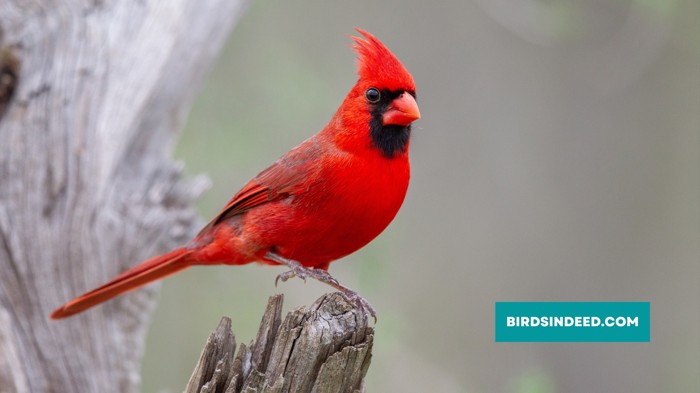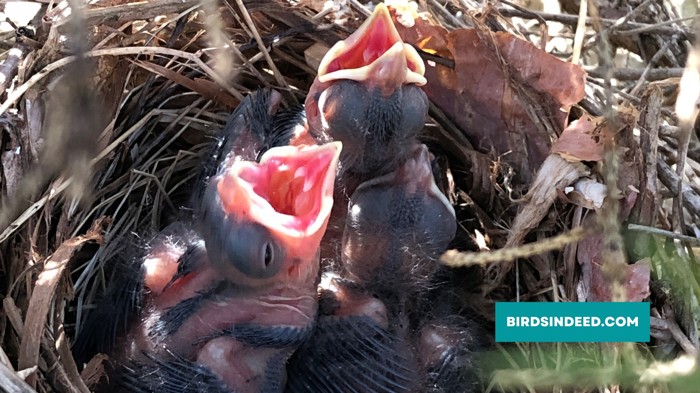Beautiful and vibrant, the Northern Cardinal is a common sight in many gardens and backyard feeders across the United States and Canada. But have you ever wondered why they are so bright and vibrant red? And how do they get their color? Are cardinals born red, or do they change color? In this article, we’ll uncover the mystery of northern cardinal coloration, and explore what it means for the birds.
Northern Cardinals are undoubtedly one of the most beautiful birds in North America. It’s fascinating how they exhibit different color schemes based on their gender and general age bracket. They are easily recognizable by their bright red plumage, black face mask, and red bill. The Cardinal is one of the most common backyard birds in North America and is also the state bird of seven states in the United States. Male cardinals are bright red in color whilst the female cardinals are tan or brown.
Contents
What Colors Do Northern Cardinals Come In?
The Northern Cardinal is best known for its bright red plumage, but it comes in other colors as well. In fact, there are many different color morphs of the Northern Cardinal, and they can range from pink to deep purple, as well as classic red.

Their appearance can be divided into two main color morphs: red and pink. The red morph is the most common and is what most people think of when they think of cardinals. On the other hand, the pink morph is very rare and is only seen in about less than 10% of cardinals.
Are Cardinals Born Red?
The simple answer to this question is no, cardinals are not born red. Baby cardinals are born with a creamy or pinkish-white color with gray scaling. After about two weeks, their feathers change to a brown and gray color. At this point, the cardinals are still not red.

It takes several more weeks for the cardinals to reach their adult coloration. By the time they are six weeks old, their feathers will start to take on their adult colors. However, it takes the birds about six months to achieve full adult coloration.
So, although cardinals are not born red, they do reach their adult coloration by the time they are six months old.
How Do Northern Cardinals Get Their Color?
The vibrant colors of the Northern Cardinal are due to a combination of pigments and structural colors. The birds produce structural colors when light is scattered and refracted by microscopic structures in their feathers, which results in the colors we see. These pigments are what give the cardinal its bright red color.
The Northern Cardinal has two types of pigments in its feathers: carotenoid pigments and melanin. Carotenoids are yellow, orange, and red pigments found in many fruits, vegetables, and invertebrates. And melanin produces black, brown, and gray pigments.
How Do Cardinals Change Color?
The Northern Cardinal’s coloration is due to a combination of pigments and structural colors. As the cardinal grows, the pigments and structural colors change, resulting in the adult coloration. The color change is due to a combination of the bird’s diet and hormones.
Carotenoids and melanin are the pigments found in the cardinal’s feathers. The carotenoids come from the cardinal’s diet, and the melanin comes from the bird’s hormones. As the bird goes through molting, the amount of carotenoids and melanin in the feathers changes, which results in the adult coloration.
Male And Female Cardinal Coloration
The Northern Cardinal is sexually dimorphic, meaning that the male and female birds have different colors. The male is the more colorful of the two, with a bright red plumage, black face mask, and red bill. The female is duller and is more of a brownish-tan color with a grayish-brown face mask and bill.

The difference in coloration is due to the hormones. The male has higher levels of the hormone testosterone, which causes the brighter colors. The female has lower levels of testosterone, which causes the duller colors.
Read: What Do Cardinals Eat?
Other Colors Of Cardinals
While the Northern Cardinal is most commonly seen in its classic red coloration, there are other colors that the bird can come in. These colors include pink, orange, yellow, white, and even purple. The pink and orange morphs are the most common and occur in about 10% of cardinals. The yellow morph is the rarest and is only seen in about 1% of cardinals. The white and purple morphs are even rarer and are only seen in about 0.1% of cardinals.

What Do The Colors Mean?
The colors of the Northern Cardinal can tell us a lot about the bird. For example, the brighter colors are usually indicative of a healthier bird. The brighter colors are also thought to be attractive to potential mates.
The colors can also tell us something about the bird’s diet. A bird with a brighter red plumage likely has a diet rich in carotenoids, while a bird with a duller color likely has a diet that is lacking in carotenoids.
What Else Do We Know About Cardinals?
Northern Cardinals are popular for their beautiful songs as well as their vibrant colors. Males are particularly well-known for their loud and melodious songs. Their songs can be heard for miles around. These songs are used to attract mates as well as to mark territory.
Cardinals are also intelligent birds and are capable of learning new behaviors. In captivity, they can be trained to perform a variety of behaviors, such as climbing ladders and playing games.
That’s All, Folks!
The Northern Cardinal is a beautiful and vibrant bird, and its bright red plumage is one of its most recognizable features. It turns out that cardinals are not born red, but they do reach their adult coloration by the time they are six months old. The coloration is due to a combination of pigments and structural colors and can tell us a lot about the bird’s health and diet. Cardinals are also known for their beautiful songs and their intelligence. Next time you see a Northern Cardinal, take a moment to appreciate its vibrant colors and beautiful song.

Tawsif is the author of Birds Indeed, a blog celebrating the beauty and diversity of birds. With a Master’s degree in Law, Tawsif brings a unique perspective to the world of ornithology. Join Tawsif on their journey of discovery as they share their knowledge and love of birds with the world.







